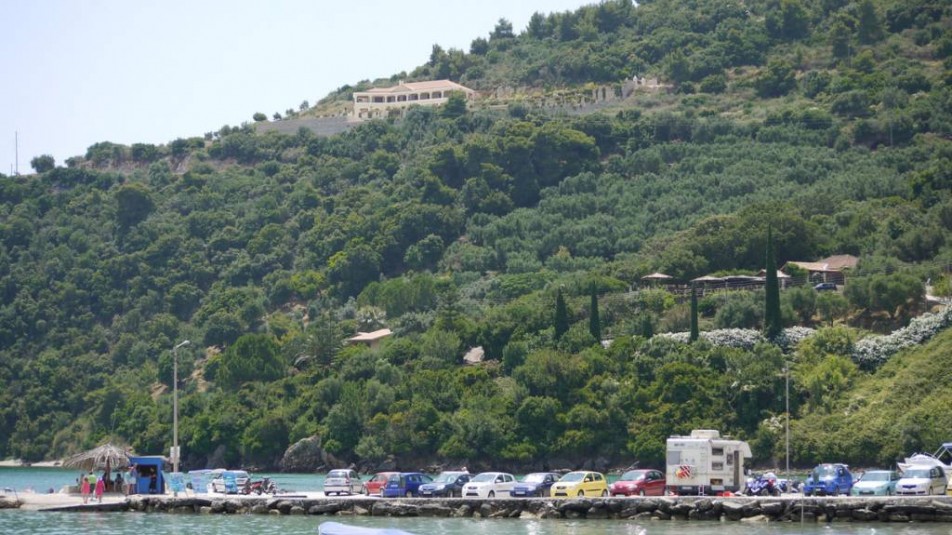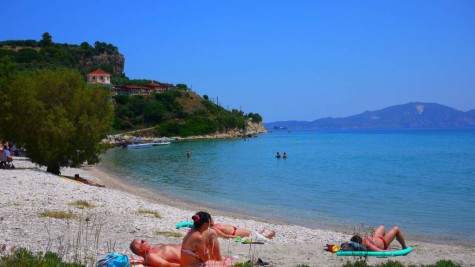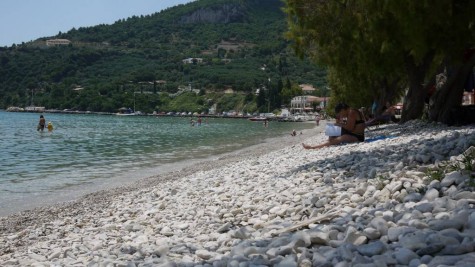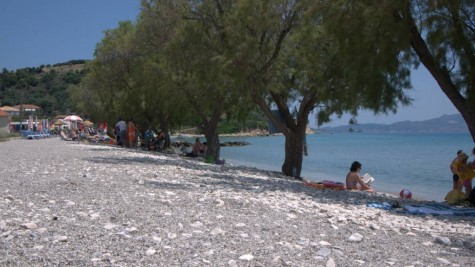Keri Lake
Keri Lake or Keri beach which it is also known as took its name from the large lake that was once there - this has now been drained and what remains in its place are wetlands, the beach itself which is a five minute walk down from the lake is a small pebbly beach which has some trees that provide natural shade and the sea here is a beautiful clear blue.
There is also a small harbour here at Keri in which you can moor your own boat, you can take trips and visit the blues caves near by or you can privately rent a boat and head over to 'Marathonisi'.
The plant types of the Lake's core are usual wetlands of Southern Greece, as: Phragmites australis, Arundo donax or Cane, Juncus acutus, J. heldreickhianus, J. bufonius, Schoenoplectus spp., Scirpus maritimus, Euphorbia sp., Dittrichia viscosa, Galactites tomentosa, etc these types grow mainly in sweet water.
In luminous places where canes have been removed, and on small paths the wetlands are presented in abundance by the following: Ranunculus marginatus, R. neapolitanus, R. facaria, Bunias erucago, Nasturtium officinale, Medicago coronaria, M. orbicularis, M. arabica, Trifolium nigrum, T. spumosum, Vicia sativa, Euphorbia helioscopia, Mercurialis annua, Verbascum undulatum, Lythrum junceum, L. hyssopifilia, Borago officinalis, Cynoglossum creticum, Anaggalis arvensis, Calendula arvensis, Chrysanthemum coronarium, Avena sp., Bromus spp., Iris pseudacorus, Arum italicum, Orchis laxiflora, in limited numbers also exists the impressive Orchis palustris.




